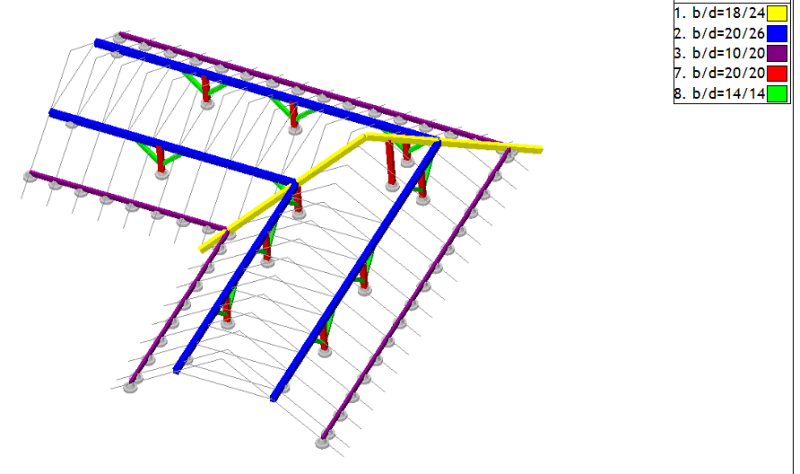greznik91
Structural
- Feb 14, 2017
- 186
This is the 1st time im designing structure like this, so I hope for some advices.
I have residental building with CLT bearing walls (cross laminated timber). Above walls are timber beams for ceiling (1 m apart) + plywood.
Resident building has 'L' shape (top view).
Since CLT walls can only take vertical loads, I have to connect roof with some kind of ties (horizontal forces acting on top of the walls). So I was thinking to use timber beams above walls as ties that take care of tension loads (horizontal loads from roof rafters) so walls see only vertical loads. That means that beams above walls are loaded vertically (ceiling loads) + tension loads (from roof). Thats what Im planning to do in areas shown in attached image bellow (view 1-1 and 2-2). But since I have the L shaped building, I am asking what to do in the middle ('?' area). I am also expecting some large horizontal forces at the support of hip beams (yellow beam in image) acting on the walls.
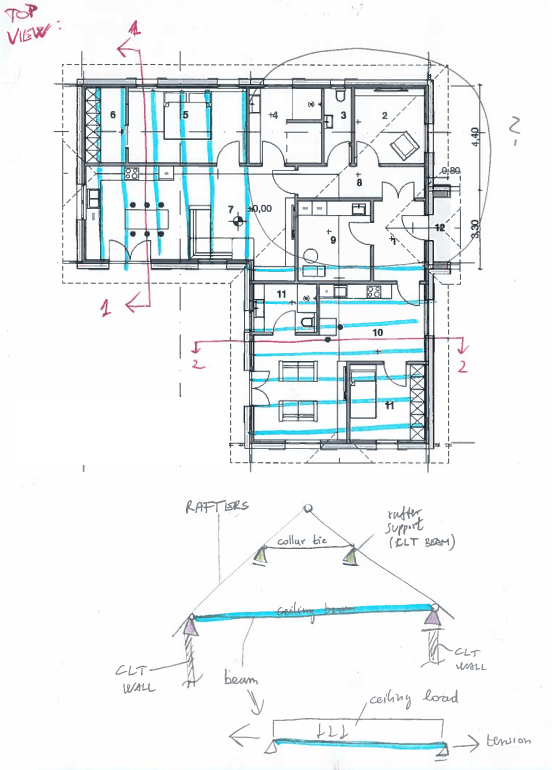
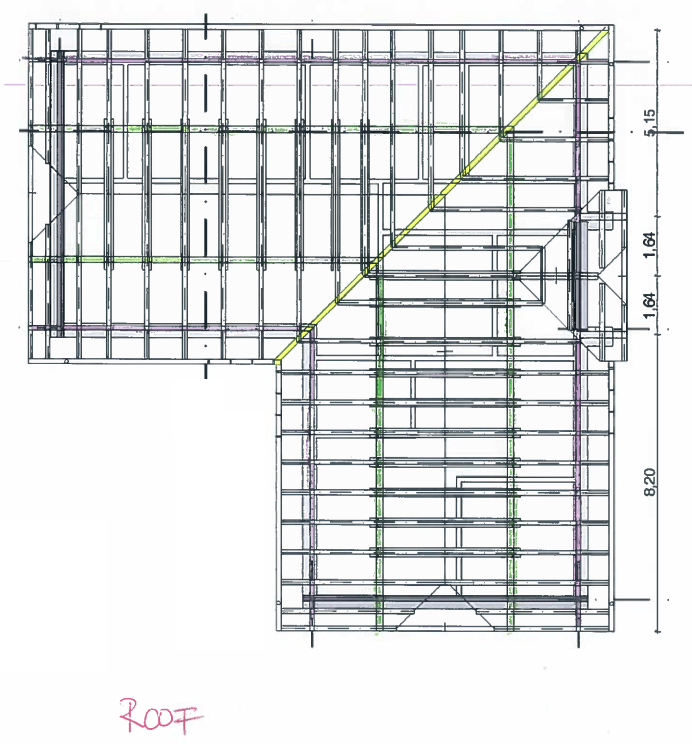
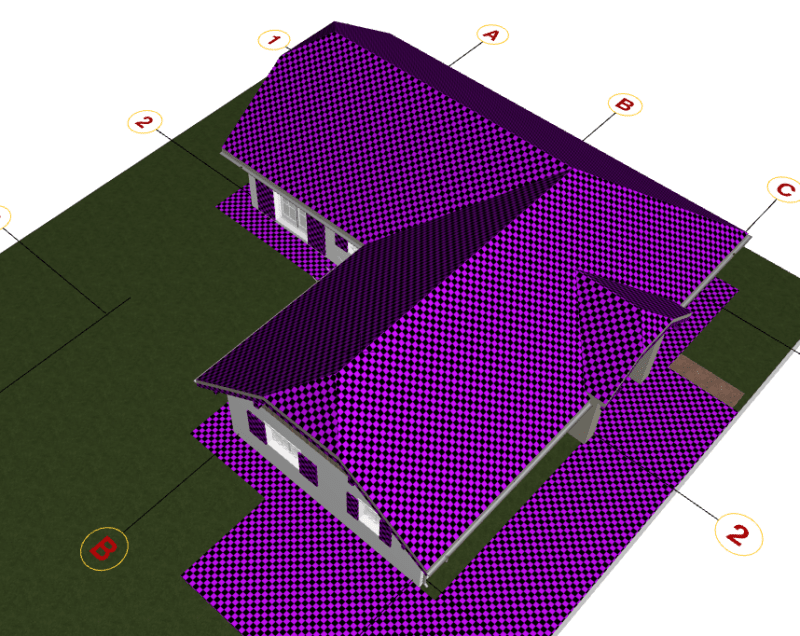
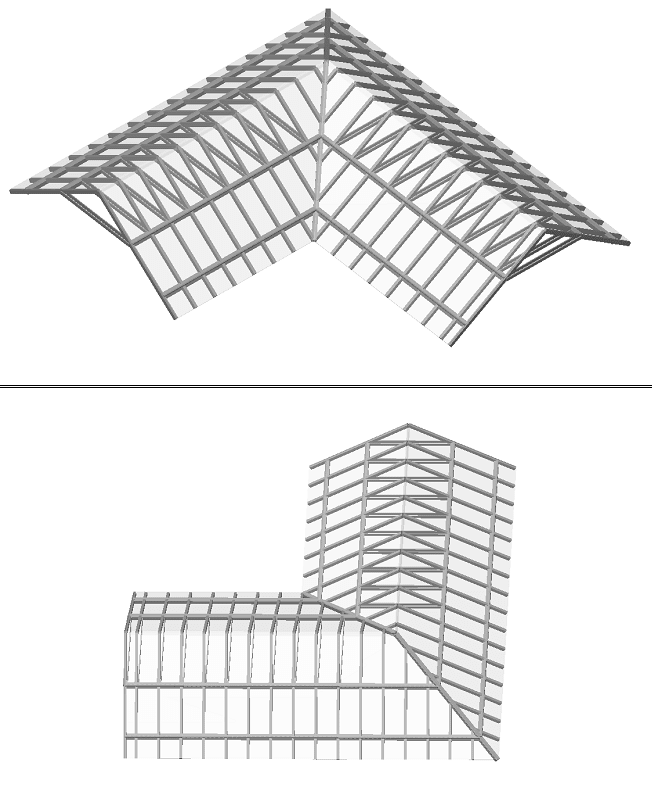
I have residental building with CLT bearing walls (cross laminated timber). Above walls are timber beams for ceiling (1 m apart) + plywood.
Resident building has 'L' shape (top view).
Since CLT walls can only take vertical loads, I have to connect roof with some kind of ties (horizontal forces acting on top of the walls). So I was thinking to use timber beams above walls as ties that take care of tension loads (horizontal loads from roof rafters) so walls see only vertical loads. That means that beams above walls are loaded vertically (ceiling loads) + tension loads (from roof). Thats what Im planning to do in areas shown in attached image bellow (view 1-1 and 2-2). But since I have the L shaped building, I am asking what to do in the middle ('?' area). I am also expecting some large horizontal forces at the support of hip beams (yellow beam in image) acting on the walls.





